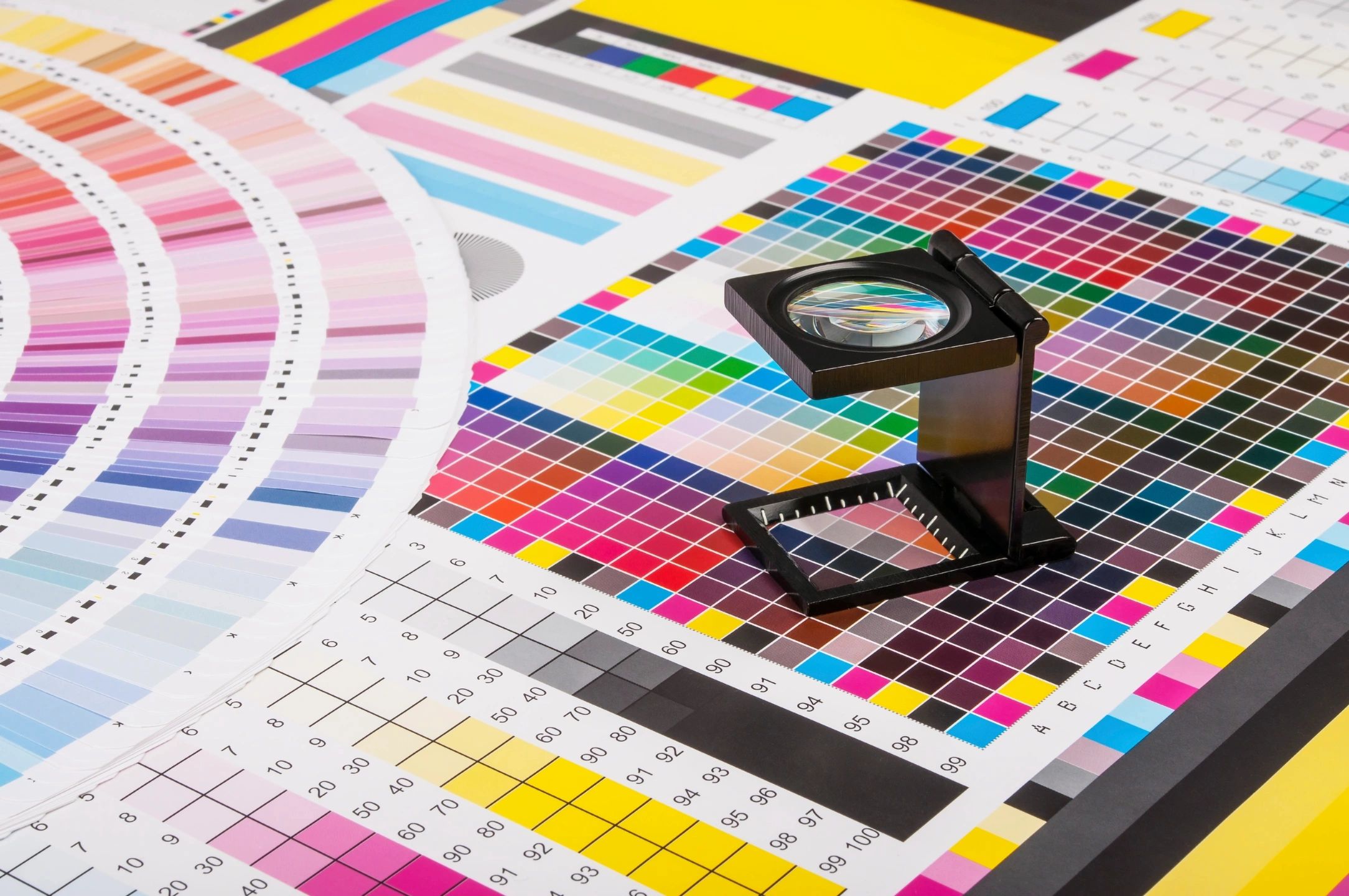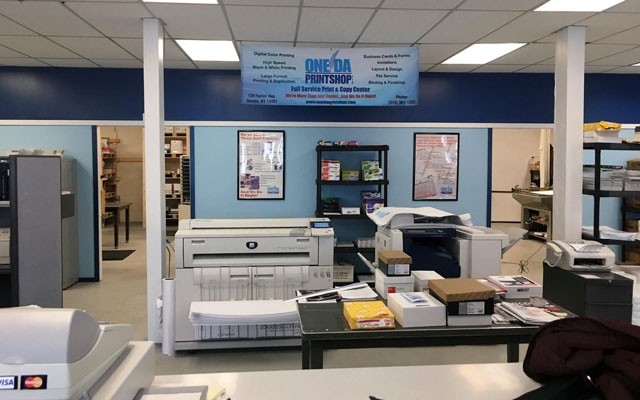How to Compare Pricing at Each Print Shop Near Me in Austin
How to Compare Pricing at Each Print Shop Near Me in Austin
Blog Article
The Ultimate Guide to Making Use Of Printing Solutions for Personalized Art Prints
Guiding via the globe of custom-made art prints needs a clear understanding of various printing services. Musicians need to take into consideration variables such as printing techniques and materials to achieve the preferred outcome. Each choice, from art work prep work to color calibration, plays a crucial role in the end product. As they discover these aspects, artists can disclose the possibility for their work to link with audiences in a significant means. What actions can they require to guarantee their prints stick out?
Comprehending Various Kinds Of Printing Solutions
Although lots of people may forget the ins and outs of printing services, recognizing the numerous types readily available is essential for anyone looking to create custom art prints. The most usual kinds consist of electronic printing, counter printing, and screen printing. Digital printing is favored for its quick turnaround and capability to create high-grade pictures directly from digital data, making it optimal for little runs. On the other hand, balanced out printing offers superior image high quality and is affordable for larger quantities, utilizing plates to transfer ink onto paper. Screen printing, frequently utilized for fabrics and marketing products, includes pressing ink via a mesh screen, permitting dynamic shades and appearances. Each approach has its distinct advantages and constraints, making it essential for musicians and developers to examine their details demands, such as quantity, desired top quality, and budget, prior to picking a printing service that aligns with their imaginative vision.
Picking the Right Materials for Your Prints
Selecting the suitable products is vital for accomplishing high-quality personalized art prints. Comprehending the various kinds of paper and the value of ink top quality can greatly impact the result. Musicians should take into consideration these factors to ensure their vision is precisely represented in the printed item.
Paper Types Explained
Choosing the right paper kind is crucial for achieving the preferred visual and sturdiness in custom art prints. Different options exist, each offering distinctive attributes. As an example, glossy paper boosts color vibrancy and detail, making it perfect for photography prints. Conversely, matte paper provides a softer finish, which is better for artwork that requires subtlety and structure. Art paper, typically made from cotton or alpha cellulose, offers historical high quality and is appropriate for reproducing intricate details in paintings (Print Shop Near Me). In addition, specialized documents, such as watercolor or canvas, can add unique aesthetic effects. Eventually, selecting the appropriate paper kind will substantially affect the last presentation, guaranteeing that the artwork is both long-lasting and visually enticing
Ink High Quality Issues
Ink top quality plays an essential duty in the general success of customized art prints. Top quality inks ensure vivid shades, sharp information, and longevity, which are important for showcasing artistic job. When selecting printing solutions, musicians ought to think about pigment-based inks over dye-based choices, as they provide far better fade resistance and color stability. In addition, the choice of ink should match the chosen paper kind, improving the print's aesthetic impact. Environmental aspects, such as moisture and temperature, can also affect ink efficiency; consequently, musicians ought to ask about ink formulations that resist these aspects. Inevitably, spending in remarkable ink top quality can boost the end product, guaranteeing that the art print stays real to the musician's vision for years to find.
Exploring Printing Techniques: Digital vs. Traditional
While both typical and digital printing techniques have their special benefits, the decision on which technique to utilize typically rests on the specific demands of the art work. Digital printing masters flexibility and rate, enabling quick turnaround times and the ability to print on need. This technique is specifically valuable for musicians that call for small runs or unique items, as it removes the requirement for extensive arrangement processes.Conversely, conventional printing strategies, such as lithography and display printing, usually produce richer textures and colors, interesting artists seeking a more responsive and authentic finish. These approaches can enhance the depth and top quality of the art work, making them suitable for larger editions. Furthermore, typical methods may offer an unique visual that electronic printing often battles to replicate. Ultimately, the choice in between these techniques should take into consideration variables like wanted top quality, quantity, and imaginative intent, directing artists to the most ideal choice for their projects.

Preparing Your Art Work for Printing
Efficiently preparing art work for printing calls for mindful focus to detail, despite the selected printing strategy. Musicians need to assure that their documents are developed at the ideal resolution, commonly 300 DPI, to maintain sharpness and clearness. The proper color mode, usually CMYK for print, is essential to achieve the preferred color precision. Musicians need to likewise consider the measurements of the artwork, making sure to include hemorrhage locations if needed, to avoid any type of undesirable white edges after trimming.Additionally, file styles play a vital duty; TIFF and PDF are often preferred for top notch prints. Prior to entry, it is necessary to assess the art work for any kind of imperfections or unwanted elements. By thoroughly inspecting these elements, artists can improve the likelihood of their prints lining up with their creative vision, eventually resulting in a successful printing result.
The Importance of Color Calibration and Proofing
Shade calibration and proofing are crucial steps in the printing procedure, as they guarantee that the last output precisely reflects the musician's vision. Appropriate color calibration assurances that the colors showed on the display suit those that will certainly be published. This process includes changing the display settings, printer accounts, and inks to achieve a consistent color representation.Additionally, proofing permits musicians to sneak peek their job prior to the last print run. This stage enables them to discover and correct any type of disparities in color, information, or saturation, thus reducing pricey errors. By making use of hard-copy or electronic evidence, artists can make enlightened choices regarding changes needed for suitable results.Incorporating shade calibration and proofing into the printing operations not only enhances the quality of the end product yet also cultivates a trusted partnership in between the printing and the musician service, ensuring satisfaction and fidelity to the initial artwork.
Picking the Perfect Dimension and Layout for Your Prints

Marketing and Selling Your Customized Art Prints
Advertising and marketing and selling custom art prints calls for a solid brand identity to stick out in an affordable market. Reliable on the internet promotion strategies and the critical use of social media platforms can substantially boost visibility and engagement. By incorporating these components, musicians can produce a compelling presence that brings in possible buyers.
Structure Your Brand Name Identification
Establishing a solid brand identification is necessary for artists wanting to efficiently market and offer their personalized art prints. This identification incorporates the artist's unique style, worths, and story, which resonate with potential customers. Artists should produce a cohesive visual visibility throughout all systems, consisting of logos, color design, and typography that mirror their creative vision. Furthermore, a clear mission statement assists interact the musician's purpose and enthusiasm. Involving storytelling concerning the inspiration behind each item can foster psychological links with the audience. Consistency in messaging, whether on social networks or product packaging, boosts acknowledgment and depend on. By very carefully curating their brand name identity, artists can distinguish themselves in an open market, bring in dedicated customers who appreciate their virtuosity.
Reliable Online Promotion Strategies
What strategies can artists use to successfully promote their personalized art publishes online? Developing a professional web site showcasing the artwork is important. This website must include top quality pictures and comprehensive summaries to engage potential buyers. In addition, artists can make use of email advertising by developing a customer listing to share updates, promotions, and new releases. Collaborating with blog owners and influencers in the art area can increase reach and reliability. Offering exclusive items or limited-time discounts can additionally create urgency, motivating acquisitions. Moreover, optimizing material for internet search try these out engine with pertinent keyword phrases will improve exposure. Lastly, preserving a blog site regarding the artistic process can attract art enthusiasts, cultivating a much deeper connection with the audience and enhancing the general marketing technique.
Using Social Media Operatings Systems
Social media site systems function as effective tools for musicians aiming to market and sell their custom-made art prints. By leveraging systems like Instagram, Facebook, and Pinterest, artists can display their job to a vast audience. Engaging visuals and critical hashtags can increase exposure, drawing possible buyers to their accounts. Frequently posting web content, such as brand-new layouts or behind the curtain procedures, assists preserve target market interest and fosters a feeling of neighborhood. In addition, artists can make use of targeted marketing to reach specific demographics, enhancing the chances of sales. Partnerships with influencers or various other artists can additionally intensify exposure. Inevitably, a well-curated social networks presence not just advertises customized art prints but likewise develops a devoted client base gradually.
Regularly Asked Questions

Exactly how Do I Find Trusted Printing Expert?
To locate reputable printing service suppliers, one ought to investigate online evaluations, look for referrals from peers, compare portfolios, demand samples, and analyze client service responsiveness. This detailed technique warranties informed choices and satisfactory outcomes.
What Is the Common Turn-around Time for Personalized Prints?
The typical turnaround time for custom-made prints differs by service provider, however usually varies from a couple of days to 2 weeks. Aspects influencing this consist of order dimension, complexity, and the specific printing methods made use of.
Can I Get a Refund if I'm Not Pleased With My Prints?
The question of acquiring a refund for poor prints often depends upon the specific printing solution's plans. Lots of firms supply satisfaction guarantees, while others might have strict return conditions, emphasizing the importance of examining terms beforehand.
Are There Any Kind Of Hidden Expenses Connected With Printing Providers?
Several printing services may consist of concealed expenses such as arrangement charges, delivery charges, or service charges for certain materials. It's essential for customers to ask about all prospective expenses before finalizing their order.
Just How Can I Guarantee My Prints Are Ecologically Pleasant?
To assure prints are environmentally friendly, one must pick environment-friendly inks, recycled paper, and lasting printing techniques. Looking into printing services that focus on sustainability and obtaining accreditations can even more guarantee very little environmental influence in the printing process. Guiding with the world of custom art prints requires a clear understanding of various printing solutions. Many people may forget the ins and outs of printing services, understanding the different types readily available is crucial for anybody looking to develop custom art prints. The most usual kinds include digital printing, official site balance out printing, and display printing. Successfully preparing art work for printing requires cautious interest to detail, regardless of the selected printing strategy. Prints intended at galleries might require typical sizes to facilitate framing, whereas one-of-a-kind layouts might appeal to collectors looking for something distinctive.Lastly, the printing service's capacities should be examined.
Report this page